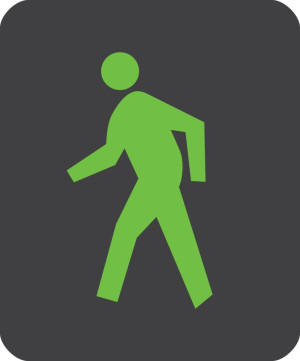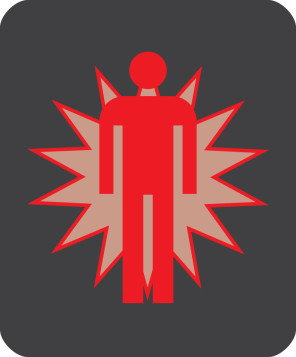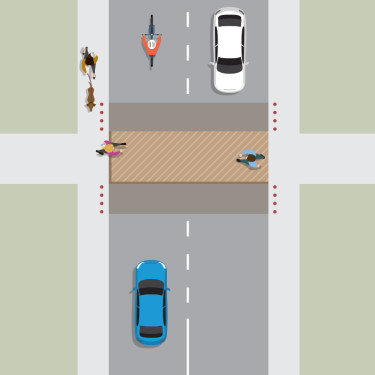Footpaths
- Footpaths provide a safe place for you to walk – if there’s a footpath, use it.
- If there’s no footpath, walk on the side of the road facing oncoming traffic. If possible, keep off the road, or as close as possible to the edge of the road. On corners, it’s best to walk on the outside edge of the curve.
- When using a shared path you must be careful and considerate. A shared path is a path that can be used by people walking, people riding bikes or other devices, like e-scooters and mobility scooters. There’ll be a sign telling you it’s a shared path.
- Be careful when crossing driveways, particularly when you may be hidden by buildings or fences. A driver coming out of a driveway may not see you.
- At night, wear light-coloured or reflective clothing, or carry a torch to help you be seen.
Crossing the road
- Cross the road only when it's safe. Always check all nearby roads for vehicles before you cross and quickly walk straight across the road. If you’re crossing at an intersection, check behind and in front for turning vehicles.
- It takes time for a vehicle to stop, so wait for a gap in the traffic before crossing the road.
- If you need to cross the road when you get off a bus, wait until the bus has moved away before checking for moving vehicles.
- If you cross the road between parked vehicles, move out as far as the headlight of a parked car nearest the traffic, check for moving vehicles and wait for a gap before crossing the road.
- Young children should hold an older person’s hand.
- When crossing the road at night, cross near a street light if you can.
Pedestrian crossings
- If you're within 20 metres of a pedestrian crossing, footbridge, underpass or traffic signal, you must use it to cross the road.
- Don’t dawdle on a pedestrian crossing.
- Don’t step out suddenly onto a pedestrian crossing if any vehicles are so close to the crossing that they can't stop.
Pedestrian traffic signals

Don’t cross

Walk quickly across

Don’t start crossing, but you may finish crossing
Courtesy crossings
Courtesy crossings aren't official pedestrian crossings. They're a place where drivers can stop safely to allow pedestrians to cross. However, drivers don't have to stop at courtesy crossings, so use them with care.

Runners
- It can be hard for drivers to see you when you're running. Wear bright clothes and reflective belts or bands.
- Obey the road rules for pedestrians.
- Be very careful at intersections.
Tips for parents
- Teach your children to be safe on the roads and footpaths. Show them where it's safe to walk and how to cross the road safely.
- Show your children the safest way to school, the shops, the playground or other places they go regularly.
- If your children are 5 years old or under, walk with them to school or preschool.
Make sure to watch for children when reversing in and out of driveways and garages.
Keeping children safe



